Rewind to January: our 2025 launched with APAP and Under the Radar—those familiar winter rituals of artistic discovery, endless meetings, and inspiration. We talked about street theater at the conference and in numerous breakout sessions, panels, and private meetings at the French Embassy. We discussed the formation of a new network for those of us who see the street and public space as the most inspiring venue for creation, sharing, and celebration: Street Theater Nexus is the working name. More to come—plans, first steps, and ways to join.
We pick up in Chile for Teatro a Mil, zipped back briefly to NYC for the powerful U.S. premiere of Dmitry Krymov Lab, and then headed to Australia, with a beautiful transitional stop in Sydney—where we caught PJ Harvey, wandered through stunning stone freshwater pools, and were shaken by Circa’s extraordinary production of Dido and Aeneas at the Sydney Opera House—before finally landing at the ever-exuberant Adelaide Festival.
Needless to say: jet lag is real.
And yet, through all the time zones and boarding passes, what remains vivid in my mind are not just the shows or venues, but the moments when performance met public space. When street theater, circus, and live music created connection—not just on stage, but in plazas, parks, gardens, and bodies. This was performance as civic gesture, as provocation, as shared joy.
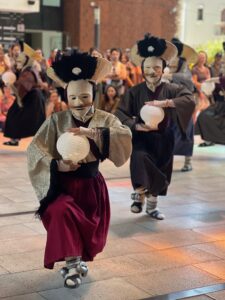
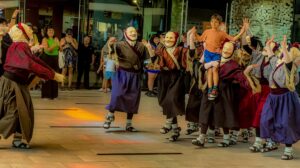
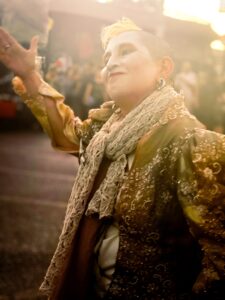
One of the most powerful moments of the year came at the very start of Teatro a Mil, when renowned Chilean playwright and director Guillermo Calderón opened the festival with a jolt of truth: “We have failed.”
He wasn’t being defeatist. He was naming the ache so many artists feel. For over 40 years, Chilean theater has been confronting the trauma of dictatorship—with the insistence: Nunca más—never again. And yet here we are, still witnessing cycles of repression and violence, in Chile and beyond.
So what, then, is the role of art?
Calderón offered this: maybe we are not here to change history, but to help heal, to generate empathy, to offer new ways of seeing—because when change seems impossible, witnessing becomes everything.
That truth was felt not just in the performances, but in the ground beneath them. In between panels at the PLATEA professional meetings and the festival’s whirlwind of theater, music, and exchange, we made a deeply emotional visit to Museo de la Memoria y los Derechos Humanos—a powerful and necessary tribute to those who endured Chile’s dictatorship and the atrocities that followed the 1973 coup d’état.
I grew up in Moscow, singing El pueblo unido jamás será vencido, believing it with all my heart—only to learn, painfully, that people can fall, that injustice can prevail, again and again. And yet, here we are: still hoping, still dreaming, still trying to make a difference.
Huge thanks to Thomas Donahower and Frances Hill for making this trip possible.
That same spirit of reckoning and resilience pulsed through the festival’s programming—from the visceral choreography of Estampida Humana, to the bold theatricality of Teatro Bol, to the gloriously unhinged rodeo-in-drag Agropeça by Antonio Araujo, performed in a sand-filled arena where machismo meets melodrama. And then came Bailarinas incendiadas by Grupo Krapp—a tragic tale of real-life ballerinas consumed by gas lamp fires in early French theaters, reimagined as a neon-lit club with a live DJ and a dance floor. It was stunning. I, of course, couldn’t join the dancing—I was once badly burned by a gas lamp in an entirely unrelated incident. Needless to say, the connection was immediate.
And then there was the street.
What moved me most about Teatro a Mil was its radical generosity. The festival didn’t stop at ticketed venues—it filled community parks across Santiago with free performances from around the world. Full families came: toddlers, teenagers, elders, and yes, dogs. This wasn’t “accessibility”—this was ownership. Performance as public service. As a civic ritual.
That idea echoed something I’ve been carrying since July 2024, when I saw MDR by Los Galindos in Libourne, France. Back then, I thought this piece about a despot and his enablers was too European to resonate with a U.S. audience. How wrong I was. Its absurdity, brilliance, and bite are more timely now than ever. We have to bring this show to the U.S.
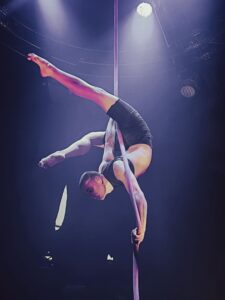
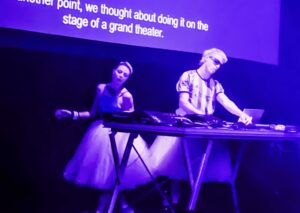
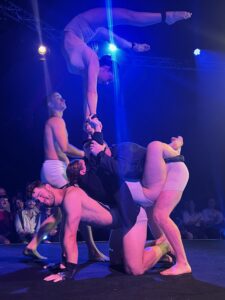
Before Adelaide, we made a stunning stop in Sydney, where we were lucky enough to experience Circa’s operatic-circus fusion of Dido and Aeneas at the Sydney Opera House. Directed by Yaron Lifschitz, this masterful reimagining of Purcell’s opera wove live music and acrobatic brilliance into a tragic love story that landed with poetic force. After a spectacle of acrobatic motion and music, Lifschitz made a devastating final choice: to let Dido die alone, stripped of everything, on a bare stage.
Also in Sydney: a live set from PJ Harvey in full form, and a few sacred hours soaking in the sun and serenity of natural stone freshwater pools.
And then, Adelaide—where March is an explosion of creativity, chaos, and community. Over 600 shows flood the city during its “Mad March,” and much of the action concentrates in two wild and deliciously subversive hubs: The Garden of Unearthly Delights and the fittingly named Gluttony.
These aren’t your average festival venues. They’re raucous carnival worlds, where you can catch a magician, eat a dumpling, watch a raunchy cabaret, and hear a world-class saxophonist—all within the same hour. It’s raw, ridiculous, joyful—and completely alive.
Among the many highlights: the long-running hit Limbo, where the original music by Sxip Shirey elevates the entire production into something primal and unforgettable; and “Mirror” by Gravity & Other Myths, Australia’s beloved circus company, which continues to tour the world but calls Adelaide home. In Mirror, once again, live music pulsed at the core—fusing movement and sound into a single beating organism. We are firmly convinced that the music scene in circus is a) where the progressive, diverse, inventive music thrives b) is what makes the show so much richer and alive.
As Unicycle Productions reorients from this global whirlwind, we carry forward both new ideas and ongoing commitments.
We continue working with Plasticien Volants, supporting their extraordinary large-scale aerial work, and await funding from the Villa Albertine Foundation to further develop an international collaboration with Iroquois artists based in Ganondagan, New York—a poetic exchange of sky beings and ancestral storytelling.
We’re developing a restaging of the iconoclastic Project Roosevelt by Tony Clifton Circus, created by street arts wizard Iacopo Fulgi—an urban spectacle where audience members, seated in wheelchairs, become a mischievous, mobile platoon. It’s both hilarious and subversively brilliant.
Our work continues with David Glass Ensemble on Galapagos, as it evolves into transmedia storytelling—expanding its reach across disciplines and platforms while holding onto its theatrical core.
We’re dreaming up a new circus production (TBA—but coming!), and heading soon to San Diego’s WOW Festival, where we continue laying the groundwork for a U.S. presenter, producer, and artist network for Street Arts, under the name Street Arts Nexus.
And alongside all this, we’re also volunteering with Jewish Family Services, helping resettle refugees left stranded by the defunding of federal support. The need is great—and it’s all connected. Performance. Presence. Service.
Now, if you know us, you know this: all of these seemingly scattered dots will connect—one bright day in the future.
But for the moment, it’s the road that matters.
📒 P.S. Curious about more standout street theater we encountered along the way? We’ve started a living journal of recommended works in progress. You can peek inside here: